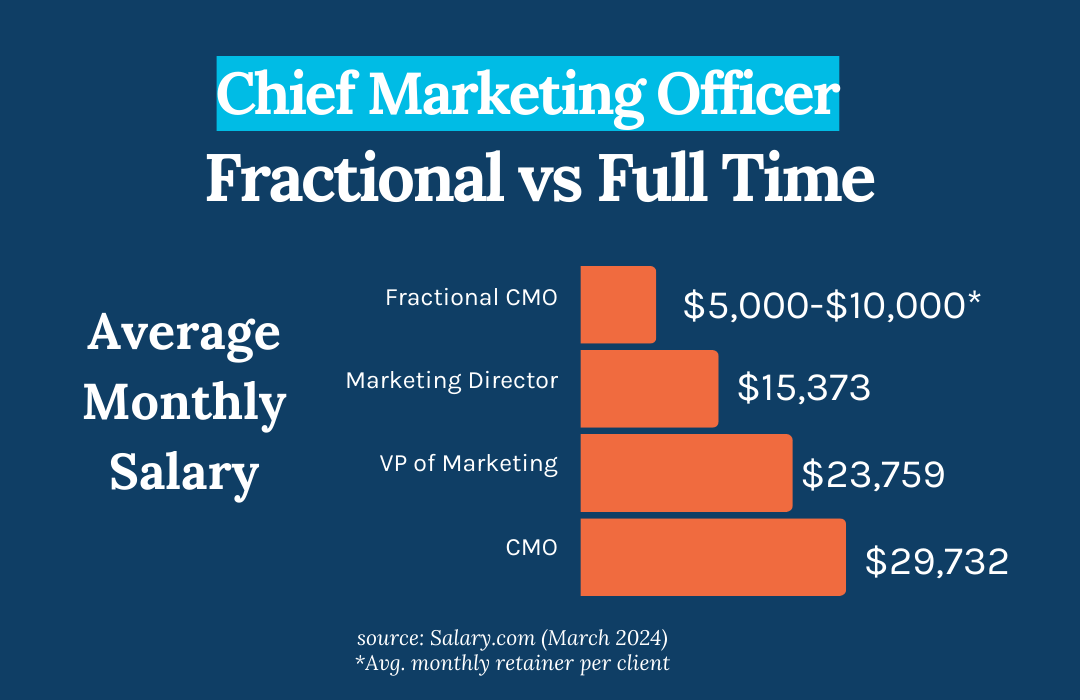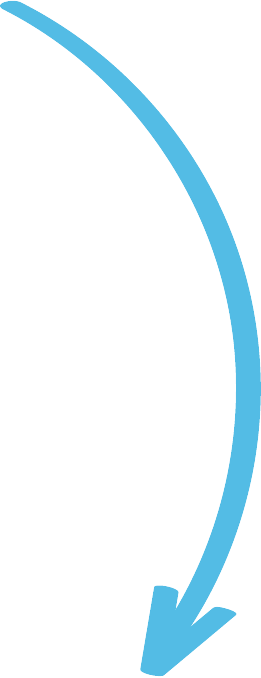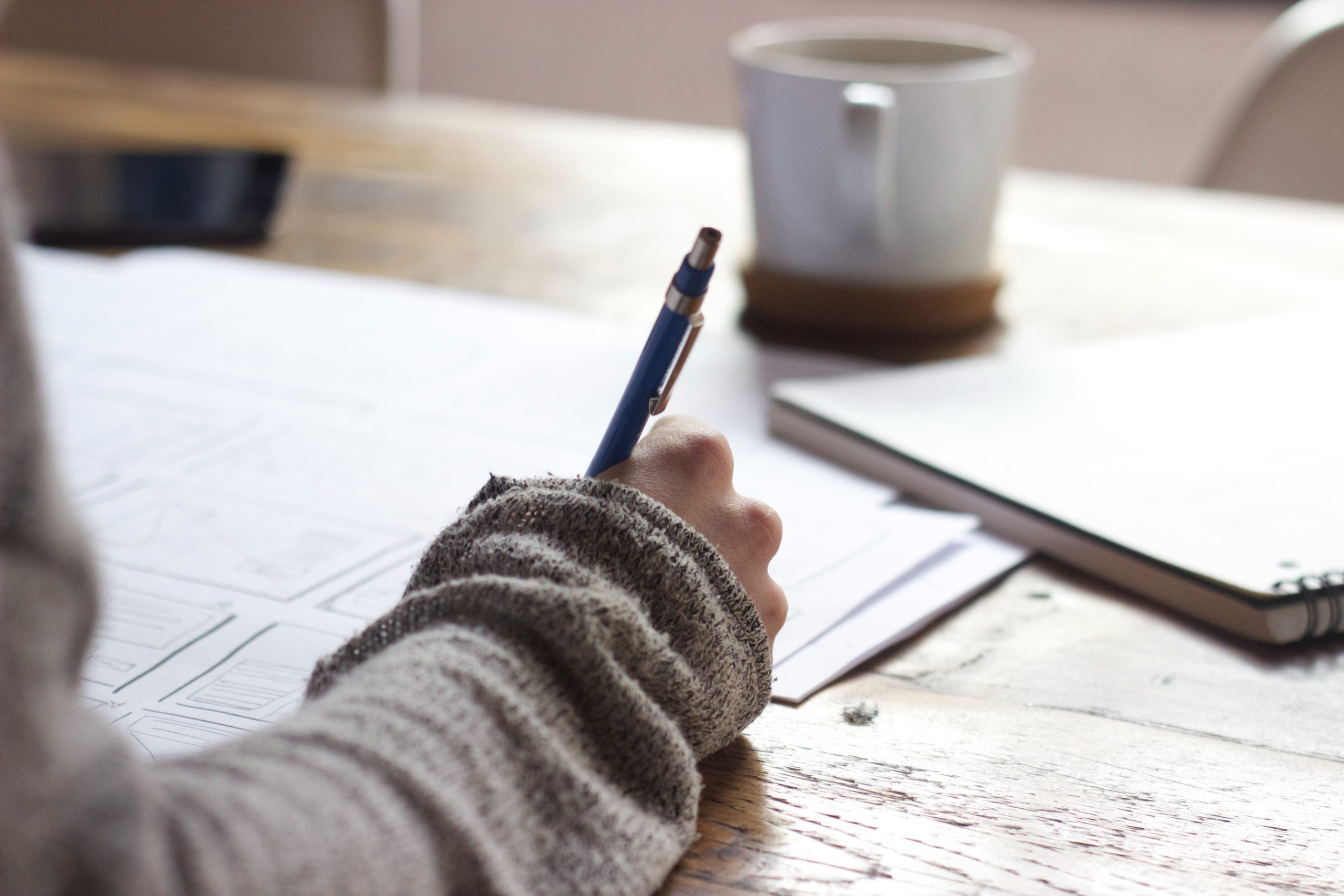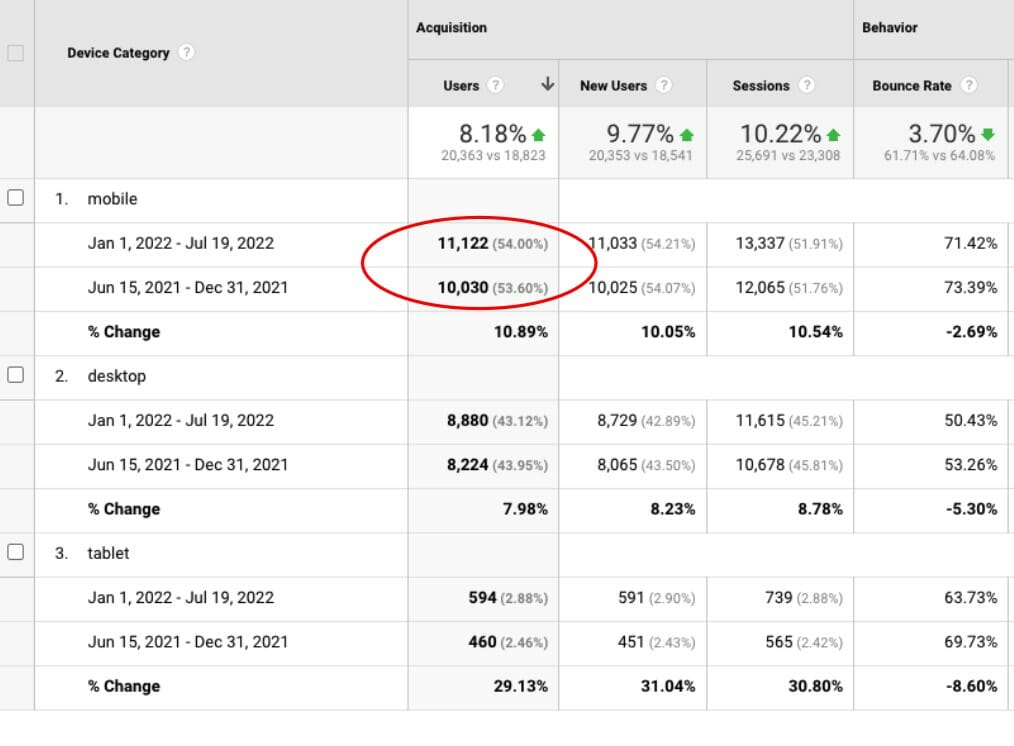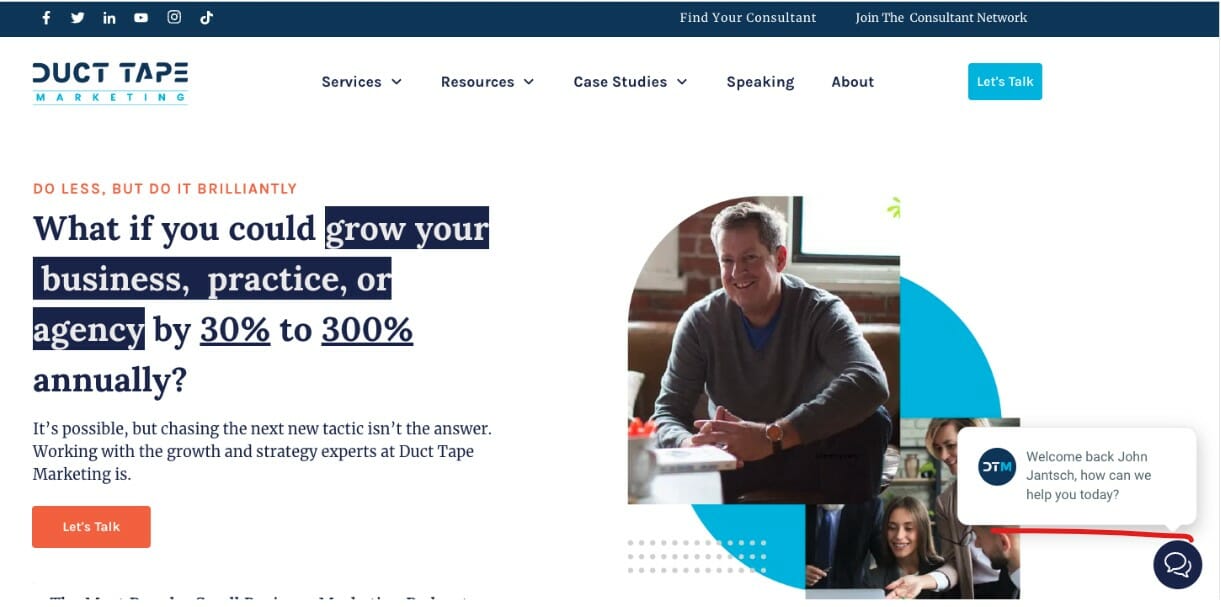Solving the Marketing Leadership Gap for Small Business (Marketing Leadership as a Service) written by John Jantsch read more at Duct Tape Marketing
Small business marketing can feel like an endless checklist: create content, run Google Ads, post on social media, and optimize for SEO. The advice is everywhere, but what if you’ve tried it all and still don’t see results?
If this sounds familiar, you’re not alone. Many small business owners struggle to create marketing strategies that deliver measurable growth. The issue isn’t always a lack of effort—it’s often a lack of leadership. Enter Marketing Leadership as a Service (MLaaS)—a powerful solution that bridges the gap between effort and impact by providing the strategic guidance small businesses need to thrive.
As the founder of Duct Tape Marketing, I’ve spent over 30 years helping small businesses transform their marketing efforts into a growth-driving machine. My mission has always been clear: simplify small business marketing and make it actionable.
In this blog, I’ll break down the critical concept of the marketing leadership gap and how addressing it can unlock your business’s full potential. Whether you’re a small business owner or a consultant looking to guide your clients, you’ll leave with practical steps to create a marketing system that works.
Marketing for Small Businesses: Why Leadership Matters
Here’s a truth I’ve learned in over 30+ years of working with small businesses: most don’t fail at marketing because they lack tactics. They fail because they lack marketing leadership. This is where Marketing Leadership as a Service becomes a game changer, offering businesses access to expert-level strategy and execution without the burden of a full-time hire.
Without a clear strategy, marketing efforts often feel scattered. You might have a polished website, post on social media regularly, or run digital ads—but if these efforts aren’t connected to a bigger vision, they’re unlikely to deliver the results you need.
Marketing leadership is the missing link. It’s about orchestrating your efforts so that every tactic aligns with your business goals and works together as part of a system. With the right leadership in place—whether through an internal team or Marketing Leadership as a Service—small business marketing becomes less about throwing spaghetti at the wall and more about building a reliable engine for growth.
Strategy: The Foundation
A good strategy is like a roadmap for your marketing—it keeps you focused and ensures every move you make supports your business goals.
It’s all about identifying where you can improve and connecting your marketing efforts so they work together. If you’re not sure where to start, getting expert advice can make all the difference. And don’t shy away from trying out different approaches tailored to your business. Take a step back and think about where you are now versus where you want to be—it’s a great way to spark new ideas and see the bigger picture.
Building a System
Instead of chasing the latest marketing tactics, create a system. This ensures long-term returns, not just short-term buzz. It’s like a marketing machine running constantly, bringing in new leads.
Building your marketing as an asset ensures it generates revenue instead of simply being an expense. Think of your marketing like an investment where your money can make even more money for you in return.
Marketing Leadership as a Service: The Strategic Edge for Small Businesses
Marketing Leadership as a Service provides small businesses with access to high-level strategic marketing expertise without the need to hire a full-time executive. It’s a flexible, cost-effective solution that fills the leadership gap, aligning your marketing efforts with business goals to drive measurable growth. By combining expert guidance with actionable strategies, this service ensures your marketing operates as a cohesive system, delivering long-term results instead of scattered, short-term wins.
How Small Business Marketing Has Evolved
Small business marketing has come a long way. Back in the day, it was all about print ads, direct mail, and word-of-mouth—simple but limited. Then the internet changed everything, bringing websites, email, social media, and PPC ads. Suddenly, small businesses had access to big opportunities, but it also got a lot more complicated with SEO, analytics, and content marketing to figure out.
Fast forward to today, and it feels like everyone’s saying you need to do it all—social media, blogs, videos, ads—you name it.
But here’s the catch: without a solid strategy tying it all together, it’s just a lot of effort without consistent results.
That’s why the businesses that succeed now are the ones that focus on leadership, clear goals, and building systems that actually work long-term. It’s not about doing more; it’s about doing the right things in the right way.
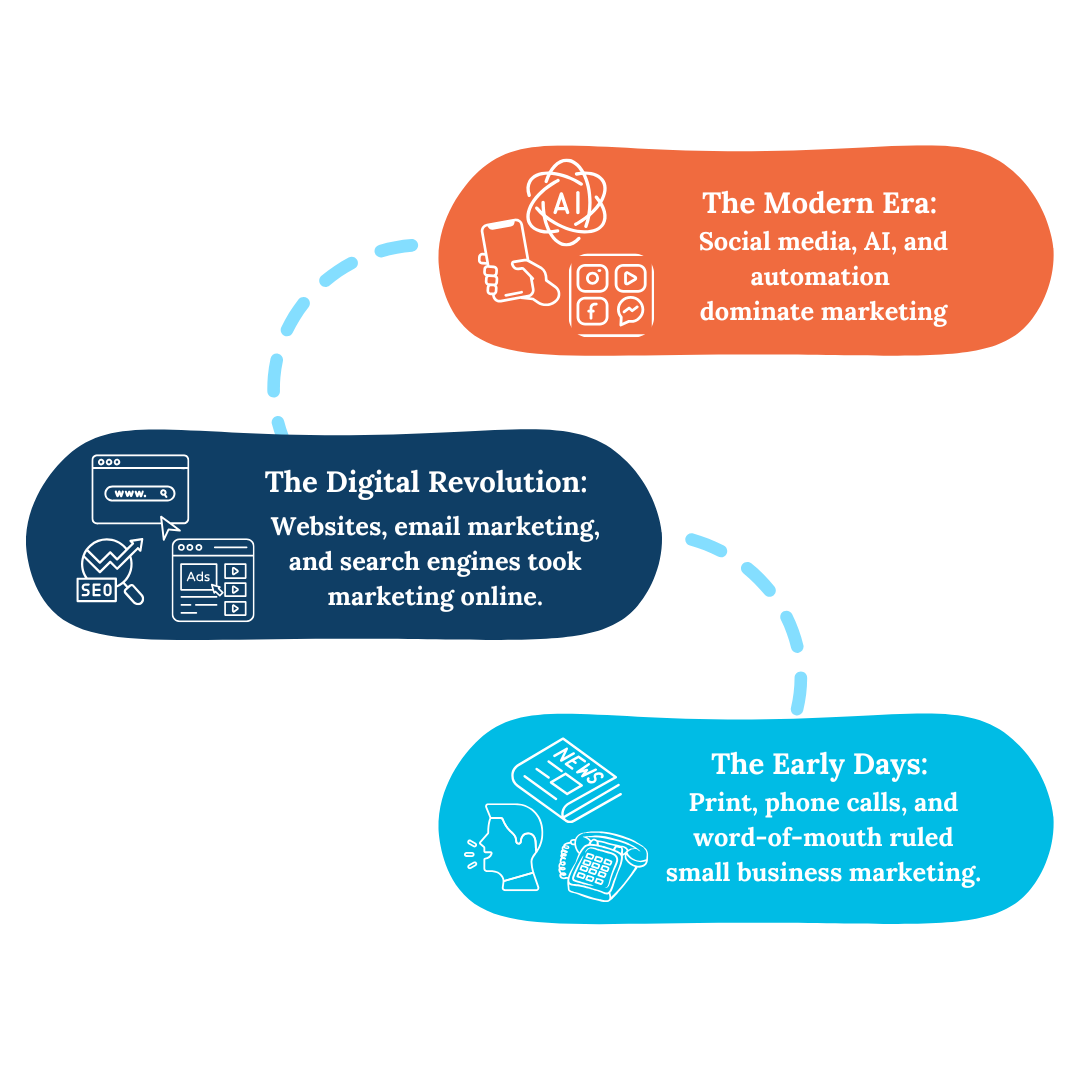
Adapting to New Challenges in Small Business Marketing
This year has been a game-changer for small businesses. Social media and other digital channels have made marketing move faster than ever. One agency owner I spoke to mentioned how tough it’s been to get new clients through referrals, pointing to a bigger need for better client experiences.
And they’re not alone. According to a recent NerdWallet report, 93% of small-business owners face challenges, with 54% citing difficulty in finding or retaining customers as their biggest hurdle. This highlights a critical need for marketing leadership to navigate these challenges effectively.
Marketing Leadership as a Service steps in as a game-changing solution, offering small businesses the strategic expertise they need to attract, engage, and retain customers. By aligning all marketing efforts with a clear strategy, businesses can turn these challenges into opportunities for growth.
Turning the Tide
Rapid changes demand adaptation to stay competitive.
Focus on four cornerstones: the 3 Cs of marketing (Customer, Competition, Company) and systems. Analyze these areas to establish marketing systems for lead generation.
Research shows 80% of customers expect personalized attention.
Creating systems involves defining steps from start to finish. Consider how leads interact with your business throughout the lead cycle.
Remember the significant impact of customer reviews on your overall reputation and word-of-mouth referrals.
Targeting Your Ideal Customer
Avoid the trap of targeting everyone. Focusing on your ideal customer is crucial for small business marketing. This targeted marketing strategy , according to SBA guidelines, improves return by focusing on prospects that fit your criteria. A well-structured, targeted marketing plan aligns efforts with returns.
Crafting Your Value Proposition
Differentiate your business. A strong value proposition demonstrates why customers should choose you over competitors.
Connect Directly and Deeply
Business cards, whether they’re physical or digital, are still a great way to make connections. Pair them with a quick, memorable intro about your business to leave a lasting impression at events or meetups.
Get involved locally by joining community events, and don’t forget to tap into online opportunities like influencer and social media marketing to expand your reach.
If you’re handling your own marketing, hire people who work well with your team. Keep up with tools and tips for things like SEO, eCommerce, and website hosting to stay on top of your game. Choosing the right tools and tech can make a big difference in how smoothly your business runs and how fast it grows.
Conclusion
Marketing for small businesses can be tricky, but it’s key to growth. The best approach? Focus on solid strategies, keep an eye on the data, and adapt as you go. Instead of chasing every new trend, partner with a leader—or a service like Marketing Leadership as a Service—to build a system for your marketing. That way, it becomes a long-term investment—not just another expense.
Small businesses have a real edge when it comes to connecting with customers and understanding what they need. By prioritizing leadership and using your resources wisely, you can hit your marketing goals and set your business up for lasting success.
Explore the Duct Tape Marketing Fractional CMO System and take control of your marketing to achieve measurable, repeatable results. Schedule a consultation today, and let’s build the thriving business you’ve always envisioned.
I know the challenges of starting a marketing agency and running a business firsthand—the endless research, the trials, the errors. It wasn’t easy, but it taught me invaluable lessons. From these experiences and over 28 years of trial and error, I developed a proven marketing system that has since helped countless businesses sustainably grow and scale.
Whether you’re a business owner aiming to grow (We’ve helped 1000s of SMBs 2x-10x their business) or an agency looking to enhance your client services (over 500 agencies globally have licensed our system), the Duct Tape Marketing Fractional CMO System can be tailored to meet your needs and boost your success. All it takes is the right strategy.
Ready to see real results? Let’s connect. Schedule a strategy session with our team today.
